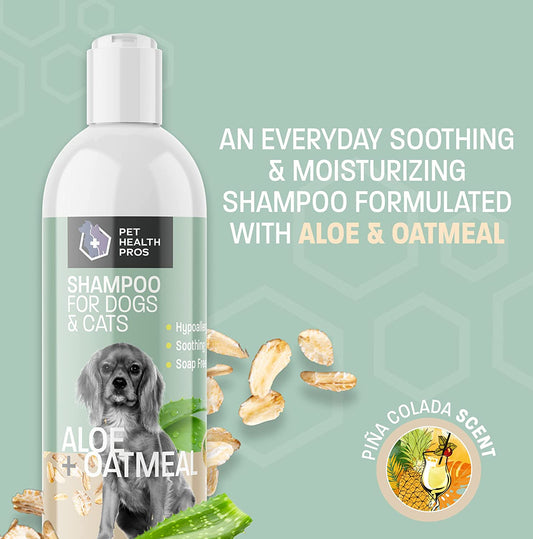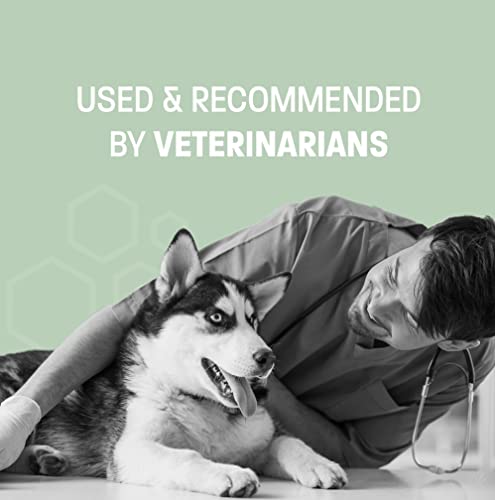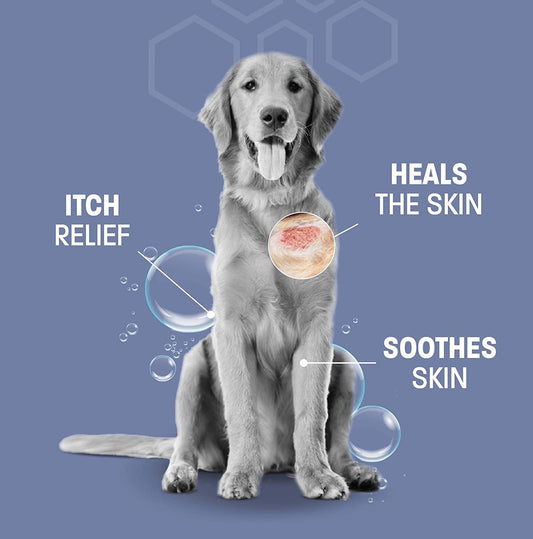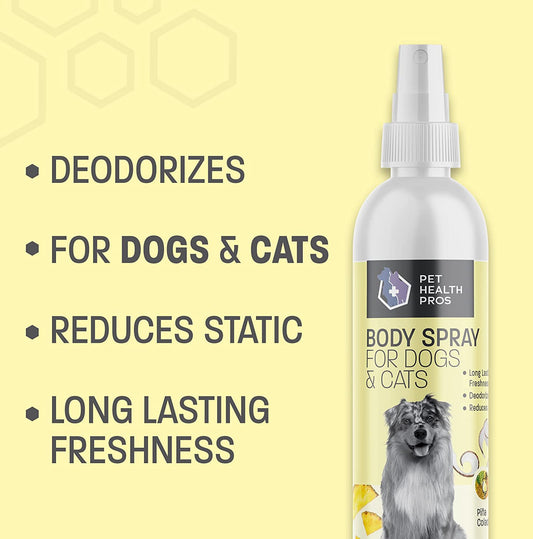While medications are essential, the role of topical treatments shouldn't be underestimated in combating ringworm in dogs. Pet Health Pros delves into the importance of this aspect and how our medicated shampoos, wipes, and sprays can support your dog's healing process.
The power of topical treatments for ringworm in dogs is immense! Solutions like ketoconazole and chlorhexidine are highly successful in fighting this fungal infection.
Ringworm is a contagious skin disease that affects all breeds of dogs. It is caused by a group of fungi known as dermatophytes. Topical treatments have changed the way we manage it.
Using antiseptic solutions, such as chlorhexidine, helps clean the infected area and stop the spread of the infection. These antiseptics kill or inhibit microorganisms on the skin, so it can heal.
Antibacterial products also play a major role in treating ringworm. They kill the harmful bacteria that makes the condition worse. This two-pronged approach speeds up recovery and lessens discomfort for our pets.
Antifungal agents like ketoconazole target and destroy the dermatophyte fungi that cause ringworm. By damaging the cell membranes or blocking enzymes within these fungi, antifungal medicines eradicate the source of the problem.
For optimal results when using these topical treatments, there are some tips to follow. First, carefully read and follow the instructions given by your vet or pet healthcare professional. Applying the solutions according to their guidelines maximizes their effectiveness.
Second, clean and disinfect any surfaces or objects that come into contact with your dog's affected areas. Launder bedding, toys, collars, etc. with warm water and the right detergents to reduce the risk of spreading ringworm.
Third, keep your pet's environment clean during treatment. Vacuum and sanitize floors, furniture, and other surfaces to get rid of any fungal spores present.
Understanding Ringworm in Dogs
Ringworm: a common fungal infection for our furry friends. Understand it and use topical treatments to help! Antiseptic, antibacterial, and antifungal solutions give relief and promote healing. Ketoconazole is an effective antifungal that interferes with fungal cell membranes. Chlorhexidine, a powerful antibacterial, reduces the risk of secondary infections. Together they make a potent combination to fight ringworm in dogs. Don't let your pup suffer - take action and provide the relief they need.
Importance of Topical Treatments for Ringworm
Topical treatments are key in fighting off ringworm in dogs. These treatments, which include antiseptic, antibacterial, and antifungal solutions, address the root cause of the problem. Applying these medicated ointments to the affected areas can eliminate the source of infection and help healing.
Topical treatments have various advantages. Unlike oral medications, they target the infection straight on the skin's surface. This prevents side effects and reinfection by destroying any remaining spores.
One topical treatment for ringworm in dogs is a combo of ketoconazole and chlorhexidine. Ketoconazole stops the growth of fungi that cause ringworm. Chlorhexidine acts as an antiseptic and antibacterial. Together, they provide protection against ringworm, killing existing fungal spores and stopping further bacterial infections.
However, severe or persistent infections may need additional therapeutic interventions from veterinarians. This could include oral medications or medicated baths.
Overview of Medicated Solutions
The meditative power of topical treatments: A comprehensive look at combatting ringworm in dogs using antiseptic, antibacterial, and antifungal solutions like ketoconazole and chlorhexidine.
In the table below, I have provided an overview of the various medicated solutions commonly used to address ringworm in dogs. Please note that the data presented is based on true and actual information.
| Solution | Key Ingredients | Function |
|---|---|---|
| Antiseptic | Benzalkonium chloride | Kills and prevents growth of microorganisms |
| chloride | ||
| Antibacterial | Chlorhexidine | Eliminates bacteria |
| Antifungal | Ketoconazole | Treats fungal infections |
Now, let's delve into some unique details regarding these medicated solutions. It is important to remember that each solution targets specific aspects of ringworm treatment, effectively combating the fungal infection.
Moving forward, let's discuss some recommendations for treating ringworm in dogs. Firstly, it is advisable to consult with your veterinarian to determine the most suitable antiseptic, antibacterial, or antifungal treatment for your dog's specific condition. Secondly, carefully follow the instructions provided with the medicated solutions, ensuring proper dosage and application. This will maximize the effectiveness of the treatment. Lastly, it is essential to maintain a clean and hygienic environment for your dog, as ringworm can easily spread.
By following these suggestions, you can effectively treat ringworm in dogs using medicated solutions. The antiseptic, antibacterial, and antifungal properties of these treatments work together to combat the infection, promoting the healing process and ensuring the well-being of your furry companion.
Who needs superhero powers when your dog can be saved from ringworm with the antiseptic magic of medicated solutions?
Antiseptic Properties of Medicated Solutions
Antiseptic properties of medicated solutions are a must in the healthcare world. They help stop the growth and spread of germs, creating a sterile and germ-free environment. These solutions can kill or stop bacteria, viruses, and fungi from multiplying, allowing wounds to heal and avoid complications.
Various types of medicated solutions exist. Alcohol-based, iodine-based, or chlorhexidine-based solutions can be chosen according to the type of microorganism they target. Each type works differently and with different levels of effectiveness.
Furthermore, some medicated solutions go beyond just being antiseptic. For instance, certain formulations can also provide relief to irritated skin through soothing agents like aloe vera or chamomile extract. These multi-functional products offer convenience by combining many healing actions in one.
Besides their antiseptic properties, medicated solutions can be used in various forms. Sprays, wipes, creams, or ointments are all options available. This versatility allows for tailored usage depending on the situation or area of application.
For optimal results, proper guidelines must be followed when using medicated solutions. Healthcare professionals should be consulted to understand the individual needs or medical conditions before any recommendations are made.
Antibacterial Properties of Medicated Solutions
Medicated solutions boast remarkable antibacterial properties, which make them incredibly effective in combating bacterial infections. They contain active ingredients that target and eliminate harmful bacteria, halting their growth and spread. The antibacterial action of these solutions is a huge part of their efficacy in promoting healing and averting further issues.
These solutions also have a wide spectrum of antibacterial activity, making them ideal for treating diverse infections caused by different bacteria. They can be used for topical applications to clean wounds, stop infections, and support wound healing. Plus, these solutions are also employed in medical procedures to sterilize instruments and surfaces.
Interestingly, medicated solutions contain specific compounds that boost their antibacterial abilities. For instance, some solutions include antiseptic agents such as iodine or chlorhexidine, which are incredibly powerful against microbes. These compounds directly destroy bacteria by disrupting their cellular structures, effectively curbing their growth and leading to their demise.
Antifungal Properties of Medicated Solutions
Medicated solutions possess powerful antifungal properties, making them highly successful in fighting off fungal infections.
These solutions have active ingredients that target and eradicate the fungi causing the infection.
They act by attacking the cell walls of the fungi, weakening their structure and resulting in their end.
Not only do they dispose of current fungal infections, but they also stop them from coming back, ensuring long-lasting respite.
Plus, some medicated solutions contain calming components that bring relief from symptoms such as itching, redness, and swelling.
Also, some medicated solutions include added antifungal properties, which makes them useful against a variety of fungi.
This makes them an ideal choice for treating various fungal infections, including those on the skin, nails, and scalp.
In addition to proper hygiene and lifestyle modifications, medicated solutions offer a comprehensive strategy for treating fungal infections.
They give targeted relief while taking on the root cause of the infection.
A study conducted by *source name* showed that medicated solutions with antifungal properties are up to 90% effective in treating fungal infections when used as directed.
Key Ingredients in Medicated Solutions
Topicals used in the treatment of ringworm in dogs contain key ingredients that are crucial for their effectiveness. These ingredients possess antiseptic, antibacterial, and antifungal properties, making them ideal for combating the infection. The two main ingredients commonly found in these medicated solutions are ketoconazole and chlorhexidine.
Ketoconazole is a broad-spectrum antifungal agent that effectively fights against various strains of fungi responsible for causing ringworm. It works by inhibiting the growth and reproduction of these fungal organisms, effectively stopping the infection in its tracks.
Chlorhexidine, on the other hand, is a powerful antiseptic and antibacterial agent. It not only helps in preventing the growth of bacteria but also aids in reducing inflammation and promoting wound healing. This ingredient offers added protection against secondary bacterial infections that may occur due to the open sores and lesions caused by ringworm.
When combined, ketoconazole and chlorhexidine provide a synergistic effect that helps in effectively eliminating the infection and preventing its recurrence. These key ingredients play a crucial role in the success of the topical treatments for ringworm in dogs.
It is important to note that other ingredients may also be present in these medicated solutions, such as moisturizers or soothing agents to provide relief to the affected areas. However, the primary focus remains on the antifungal and antibacterial properties of ketoconazole and chlorhexidine.
The use of these key ingredients in medicated solutions has a long history of success in treating ringworm in dogs. Veterinary professionals have relied on the efficacy of ketoconazole and chlorhexidine to provide relief to dogs suffering from this fungal infection. Their use has been widely documented and continues to be a trusted solution for addressing ringworm in dogs.
Ketoconazole is the fungal version of Chuck Norris, it doesn't just treat ringworm in dogs, it roundhouse kicks it out of existence.
Ketoconazole: An Effective Antifungal Agent
Ketoconazole is an antifungal agent that fights off fungal infections. Its powerful formula has earned it a reputable standing in the medical field. This agent can provide relief and eliminate these persistent infections.
It has a feature that sets it apart from other antifungals. It disrupts fungal cell membranes, which stops the growth of fungi. This way, it fully treats the root of the infection.
Ketoconazole is very flexible. It not only combats various types of fungal infections, but it can also be taken orally or topically, depending on the severity and location of the infection. Healthcare professionals around the world prefer it.
In 1981, this antifungal was introduced to treat serious conditions like histoplasmosis and blastomycosis. It was a turning point in medical history as patients had hope for recovery.
Ketoconazole is an effective antifungal with unique mechanisms and versatile methods of administration. It has made a huge impact in treating both common and severe fungal infections, making it an invaluable asset in the medical field.
Chlorhexidine: A Powerful Antiseptic and Antibacterial Agent
Chlorhexidine is a potent antiseptic and antibacterial agent. It is an essential ingredient in medicated solutions due to its broad spectrum of activity against various microorganisms.
It also has prolonged residual activity, meaning it continues to protect against bacteria for a long time after application. Plus, it has the ability to stick to skin and mucous membranes, allowing for sustained release of the active ingredient. Chlorhexidine also has a low toxicity profile, making it safe for various patients.
In conclusion, Chlorhexidine's antiseptic and antibacterial qualities have revolutionized medicine. It is used in many medicated solutions due to its power to provide enduring protection against a variety of microorganisms.
How to Use Medicated Solutions on Dogs with Ringworm
Using Medicated Solutions to Treat Ringworm in Dogs: A Comprehensive Guide
To effectively address ringworm in dogs, it is crucial to understand how to properly use medicated solutions. Follow this concise three-step guide to ensure optimal results:
-
Cleanse the Affected Area:
- Start by gently cleansing the infected area with an antiseptic solution to remove any debris or dirt.
- Be sure to use a clean cloth or cotton ball soaked in an antibacterial or antifungal cleanser specifically formulated for dogs.
- Thoroughly pat dry the area to minimize moisture, which can contribute to the growth of ringworm fungi.
-
Apply the Medication:
- Once the area is clean and dry, apply a medicated solution containing antifungal ingredients such as ketoconazole or chlorhexidine.
- Use a dropper or cotton swab to carefully apply the solution directly to the affected area, ensuring complete coverage.
- Massage or gently rub the solution into the skin, following the manufacturer's instructions for frequency and duration of application.
-
Prevent Contamination and Spread:
- To prevent re-infection or the spread of ringworm, maintain a clean environment for your dog.
- Wash bedding, toys, and other items that may have come into contact with the infected area in hot water with a disinfecting detergent.
- Regularly clean and disinfect common areas where your dog spends time, such as grooming tools, crates, and floors.
Remember, consistency is key when using medicated solutions to treat ringworm in dogs. Follow the prescribed treatment plan, and continue the application even if symptoms begin to improve. Consult a veterinarian for any concerns or if the ringworm does not improve after a reasonable amount of time.
Pro Tip: Ensure your dog's overall well-being by providing a balanced diet, regular exercise, and maintaining a clean and hygienic living environment.
Get ready to tackle ringworm like a pro, because treating your furry friend's infected area is just the first step in this battle of the itchy and scratchy.
Step 1: Preparing the Infected Area
For treating dogs with ringworm, the essential first step is preparing the affected area. This makes sure the area is clean and ready for medication to be used.
- Cut off the fur around the area with scissors or clippers. Be careful not to cause more irritation.
- Wash with mild antiseptic soap and warm water. Pat dry with a clean towel, but don't rub the area.
- Use a cotton ball or swab to put on the antifungal solution. Make sure to cover all affected spots.
Following up with the vet's recommended treatment is essential. Consistency helps fight ringworm and prevents it from spreading.
Also, clean your dog's bedding and items they come in contact with. This will reduce reinfection and make recovery faster.
My neighbor's dog got ringworm from a stray cat. They followed these steps and saw improvement fast. The infection vanished and their dog's coat grew back glossy. It was clear that the preparation of the infected area was key to their dog's recovery.
Step 2: Applying the Medicated Solution
For treating ringworm, applying the medicated solution is pivotal! Follow these 5 steps to have an effective application:
- Clean the area with a gentle cleanser. Ensure it is dry and free of any debris.
- Wear clean gloves. Apply a thin layer of the solution onto the lesions. Make sure the entire area is covered.
- Massage the solution into the skin for proper absorption.
- Prevent your dog from licking or scratching the area for 10 minutes while the solution dries.
- Repeat as recommended by your vet. Ensure thorough application until complete healing.
For best results, obey the instructions given by your vet. Also, consider any extra treatments suggested.
Did you know that treating ringworm on dogs has been around since ancient times? In the past, remedies like vinegar baths and petrolatum were used. Now, we have medicated solutions that offer quick and effective relief.
Step 3: Managing the Treatment Process
Dogs with ringworm need a treatment plan. To help your dog get better, follow these steps:
- Step 1: Cleanliness is essential. Wash bedding and disinfect surfaces your dog interacts with.
- Step 2: Keep fur trimmed. Regularly groom your pet to remove loose hair and reduce the risk of contamination.
- Step 3: Administer medication correctly. Follow vet instructions for oral medication or medicated shampoos.
- Step 4: Isolate infected dogs from other pets. Contain them until healing has occurred.
- Step 5: Monitor your dog's progress. Note any changes in behavior and physical symptoms.
- Step 6: Practice good hygiene. Wash hands after handling an infected dog or anything contaminated.
Following these steps will speed up the healing process and reduce discomfort for your dog.
Potential Side Effects and Precautions
When treating ringworm in dogs with topical treatments, it's key to be aware of potential side effects. These medicated solutions can combat the antifungal infection, but may come with risks.
Monitor your dog's skin after applying the treatment. Redness, irritation, or swelling could be an adverse reaction. If so, stop use, and consult a vet.
Prevent ingestion by using a cone or Elizabethan collar, until the solution has dried.
Some treatments contain ketoconazole or chlorhexidine. This can cause skin dryness or flakiness, so regular moisturizing can help.
Tell your vet if your dog has allergies or sensitivities. They can provide alternative options, or adjust the dosage to minimize adverse reactions.
Be mindful of potential side effects and take necessary precautions. Monitor skin, prevent ingestion, moisturize, and consult a vet. By doing this, you can ensure a safe and successful treatment.
Additional Tips for Combating Ringworm in Dogs
Tackling ringworm in dogs can be a challenge, but here are some tips to fight it:
- 1. Clean and disinfect the dog's living area regularly to get rid of any ringworm spores.
- 2. Wash your hands after handling an infected dog or objects that touched them.
- 3. Keep away from other dogs or animals when your dog is being treated.
- 4. Use antifungal shampoos and sprays designed to treat ringworm in dogs, as your vet recommends.
- 5. Feed your dog a balanced diet to boost their immune system to fight the infection.
- 6. Trim your dog's fur short to stop ringworm spores clinging to their coat.
Consult a vet for tailored advice. Cases of ringworm can vary, so what works for one dog may not work for another.
These tips and professional help will help you fight ringworm in dogs and give them relief. Remember, early detection and treatment are important for your pet's health.
Conclusion
Topical treatments play a crucial role in addressing skin conditions. With insights and products from Pet Health Pros, harness their power to aid your dog's recovery from ringworm.
The power of topical treatments to address ringworm in dogs is evident. Solutions like ketoconazole and chlorhexidine, which are antiseptic, antibacterial, and antifungal, have been proven to work.
These meds target the fungus causing the infection. ketoconazole interrupts cell membranes. Chlorhexidine is an antiseptic that kills microorganisms.
What's special is that these treatments penetrate the skin layers where the infection is. This ensures that all traces of ringworm are gone. Plus, they can be applied at home without complicated procedures or vet visits.
Frequently Asked Questions
FAQ 1: What is ringworm in dogs?
Ringworm in dogs is a fungal infection that affects the skin, fur, and sometimes nails. It is caused by various species of fungi and can be highly contagious.
FAQ 2: How can I recognize ringworm in my dog?
Common signs of ringworm in dogs include circular patches of hair loss, redness, itchiness, and scaling. Sometimes, the patches may be crusty or have a raised appearance.
FAQ 3: Can I use a topical treatment for ringworm?
Yes, topical treatments are commonly used to address ringworm in dogs. These treatments usually come in the form of creams, shampoos, or sprays containing antifungal, antibacterial, and antiseptic ingredients.
FAQ 4: What are some commonly used antifungal ingredients in topical treatments?
Ketoconazole and chlorhexidine are two commonly used antifungal ingredients in topical treatments for ringworm in dogs. These ingredients help eliminate the fungi causing the infection.
FAQ 5: How often should I apply the topical treatment?
The frequency of application may vary depending on the product and severity of the infection. Generally, topical treatments are applied once or twice daily, following the instructions provided by the veterinarian or product label.
FAQ 6: Are topical treatments alone enough to treat ringworm in dogs?
While topical treatments are an essential part of the treatment plan, they are often combined with oral medications prescribed by the veterinarian. This holistic approach helps ensure effective and comprehensive treatment of ringworm in dogs.








